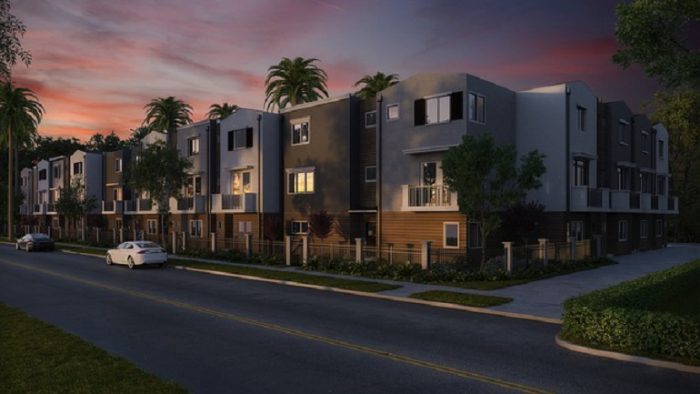Zondits recently sat down with Mike Rovito, CEO of Dwelô, to talk about how the company is working to make apartment living and management smarter.
Ali Jackman, ERS for Zondits, July 31, 2018
Can you describe the products and services that Dwelo offers?
Dwelo provides smart apartments to large owners and managers of multifamily housing. We take third-party commercial devices like Nest thermostats, Amazon Echos, and various smart locks and light switches and put them on an enterprise platform built specifically for apartments. Owners get to offer a smart home to their residents, which helps them maintain rents and attract renters, and they also get to streamline the operations of their properties.
Is the system just about delivering bottom-line improvements and ROI, or are there other benefits or future possibilities for residents and building managers?
Dwelo provides value in a number of ways. Think about all the different smart devices that are out there and the jobs they do. Smart thermostats save energy and improve comfort. Smart locks make access easy and improve security. Those are just some examples. Dwelo enables owners to access those value propositions on one platform built for them. An average apartment complex spends $90,000 a year on average in common areas and vacant units, and we can cut that in half. Managers using our product report 40% reductions in lockouts and over 200 hours per year saved from having digital access to units. And our communities see 2%–3% rent increases, as well, which is a huge driver for owner interest. All of these things flow to the bottom line, even the time savings, because we are selling to businesses and that’s what they care about. But this is also an investment in infrastructure that can solve problems. There are amenities such as cleaning services that are increasingly popular in high-end communities – they need an easy way to get into the unit and we can offer that. On the other side, smart appliances or thermostats can report data that can predict failures and help avoid them, so instead of a resident coming home to a hot apartment with a broken AC, the maintenance team can fix it before they even come home. These sorts of things are hard to quantify, but it is clear that smart technology has extraordinary promise in apartments.
What are some of the challenges smart technology faces in multifamily housing?
Multifamily housing, and rentals in general, have a unique stakeholder dynamic that makes them challenging for typical smart technology devices to serve. Consumer devices are geared toward residents, but residents in apartments are not allowed to change thermostats, locks, light switches, and the like. On the flipside, commercial solutions for businesses totally miss the value proposition for residents, which is half the value for these owners investing in these solutions. Layered on top is the challenge for managers to run these systems. Can you imagine installing and managing 200 Nests? It’s a great product, but managing 200 passwords and 200 accounts winds up being 200 headaches. When you put something into the walls as an apartment owner, residents expect you to manage it. But managers aren’t technologists and can’t be residents’ personal Geek Squad. They need help with all that. So we built a technology platform that unifies all of the management to make it easy for managers and residents alike to use this stuff, and we supplement it with a very hands-on service, training, and support model to make the whole process run smoothly.
I understand that you recently worked on a project that was looking at potential savings in vacant units – can you tell us about this?
We did a study of vacant unit energy savings with a partner named Conservice that does utility re-billing services for over 3 million apartments. Basically, they take master-metered properties, submeter them, and handle the billing for the residents. We were able to take data they have from thousands and thousands of vacant units across the country and study the patterns of usage. There is a common phenomenon whereby a vacant unit will cost $20 per month for four or five months and then suddenly jump to $100+. What most likely occurs is that a maintenance person or contractor will turn on the AC or open the windows while doing work on-site, then leave and forget about it. The HVAC can run unabated for days if not longer. By studying the pattern of usage, we were able to identify a theoretical savings potential of 47% in aggregate. This comes from moving outlier units, which represent a disproportionate amount of usage (7x median in most regions), back to the median. It’s a pretty enormous amount of waste when you put it in the context of the whole industry: owners spend $32B per year on energy nationally, so we’re talking something in the range of $15B a year that can be saved through automation.
Does your approach to serving apartment residents and managers differ from how you would serve other customers?
We are 100% focused on rental housing. Our competitive advantage comes from serving that customer base better than anyone else. The market is nuanced and demanding, so the only way to deliver successfully is to provide that enterprise platform and combine it with hands-on service, training, and support to ensure smooth management of the thousand devices or more a community has.
Moving forward, what kinds of new projects or innovations would you like to see Dwelo pursue?
We are always looking to expand our value proposition within the apartment industry specifically. We recently added a perimeter access feature – smart locks for the main doors, elevators, etc. – and that has been well received. We are also looking to expand by integrating with other software platforms in the apartment industry to increase the value of our smart devices for owners and managers.
